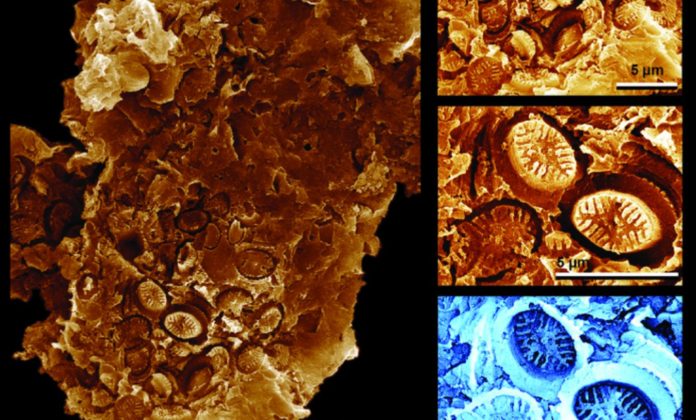“The discovery of these beautiful ghost fossils was completely unexpected. This was a total surprise!” – say the researchers.
A group of researchers have discovered a fascinating sort of fossilization that had been almost completely overlooked until now.
The fossils are microscopic “ghosts” of coccolithophores, single-celled plankton that thrived in the seas millions of years ago and whose discovery is revolutionizing our knowledge of how climate change affects plankton in the oceans.
Coccolithophores are vital in today’s seas because they provide a significant amount of oxygen, maintain marine food webs, and store carbon in bottom sediments. They’re a form of microscopic plankton with hard calcareous plates around their cells called coccoliths, which are what generally fossilize in rocks.
Multiple prior global warming events have shown declines in the abundance of these fossils, implying that climate change and ocean acidity had a significant impact on these plankton. However, new global records of abundant ghost fossils from three Jurassic and Cretaceous warming periods (94, 120, and 183 million years ago) published today in the journal Science reveal that coccolithophores were more adaptable to past climate change than previously imagined.
Dr. Sam Slater from the Swedish Museum of Natural History says that “the discovery of these beautiful ghost fossils was completely unexpected.”
They “initially found them preserved on the surfaces of fossilized pollen, and it quickly became apparent that they were abundant during intervals where normal coccolithophore fossils were rare or absent – this was a total surprise!”
Despite their minuscule size, coccolithophores can be plentiful in the current ocean, appearing as cloud-like blooms from space. Their calcareous exoskeletons settle to the seafloor after death, accumulating in large numbers and producing rocks like chalk.
“The preservation of these ghost nannofossils is truly remarkable,” adds Professor Paul Bown (UCL). “The ghost fossils are extremely small ‒ their length is approximately five thousandths of a millimetre, 15 times narrower than the width of a human hair! ‒ but the detail of the original plates is still perfectly visible, pressed into the surfaces of ancient organic matter, even though the plates themselves have dissolved away”.
Ghost fossils arose as sediments on the seafloor were buried and transformed into rock. The ensuing pressure compressed the coccolith plates and other organic remains together, and the hard coccoliths were forced into the surfaces of pollen, spores, and other soft organic matter as additional mud was eventually deposited on top. Later, acidic waters within rock voids destroyed the coccoliths, leaving just their impressions – the ghosts – left.
“Normally,” as explained by Professor Vivi Vajda, “palaeontologists only search for the fossil coccoliths themselves, and if they don’t find any then they often assume that these ancient plankton communities collapsed.
“These ghost fossils show us that sometimes the fossil record plays tricks on us and there are other ways that these calcareous nannoplankton may be preserved, which need to be taken into account when trying to understand responses to past climate change”.
The Toarcian Oceanic Anoxic Event (T-OAE) was a period of fast global warming in the Early Jurassic (183 million years ago) triggered by a spike in CO2 levels in the atmosphere induced by major volcanism in the Southern Hemisphere. The researchers discovered ghost nannofossils from the T-OAE in the UK, Germany, Japan, and New Zealand, as well as from two other similar global warming episodes in the Cretaceous: Oceanic Anoxic Event 1a (120 million years ago) in Sweden, and Oceanic Anoxic Event 2 (94 million years ago) in Italy.
Algal plankton was abundant during previous warming periods, contributing to the spread of marine dead zones, where bottom oxygen levels were too low for most animals to live. These circumstances, such as plankton blooms and dead zones, may become more common as our seas warm.
Image Credit: Getty
You were reading: Scientists Have Found A New Type of Surprising “Ghost” Fossils
